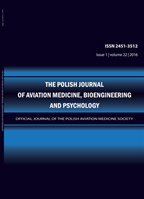2020, Volume 26, Issue 4
DEVELOPMENT OF A MACHINE-LEARNING ALGORITHM FOR PREDICTING THE ARRIVAL TIME AND ASSESSING FACTORS INFLUENCING PATIENT ARRIVAL AT HOSPITAL EMERGENCY DEPARTMENT – PRELIMINARY STUDY
ILONA KARPIEL1, OLGA ZIEBA1
-------------------------------------------------------------------------------------------------
1The Centre for Biomedical Engineering, Łukasiewicz Research Network – Krakow Institute of Technology
Autor korenspondencyjny: ILONA KARPIEL; The Centre for Biomedical Engineering, Łukasiewicz Research Network – Krakow Institute of Technology; email: ilona.karpiel@kit.lukasiewicz.gov.pl
Full text
Streszczenie
Abstract: Healthcare is one of the most important topics affecting society. Emergency Departments (ED) play an important role in the patient treatment cycle, providing immediate and primary health care as well as access to services offered by hospitals. From a hospital's perspective, it is crucial that emergency departments are well organized in each hospital sector. One of the most important yet overlooked problems in the medical industry is emergency department congestion.
An attempt was made to estimate and predict, using predictive models and machine learning algorithm techniques, the impact of factors on the arrival time of patients at hospital emergency department and to verify the effectiveness of teaching the models, along with a comparison which one is the best in predicting the phenomena. Research materials were source data from the 2018 National Hospital Ambulatory Medical Care Survey (NHAMCS) – Emergency Department.
In this paper, a study was conducted to search for factors that could affect the frequent arrival of patients at emergency departments. A tool for predicting the expected arrival time, taking into account the current arduous conditions/factors in the ED, has the potential to improve situational awareness and contribute to mitigating problems related to congestion. It appears that the model can be used to enhance decision support systems by determining patient arrival times.
The results obtained in the random forest regression algorithm are estimated at R2 of 86% and RMSE of 5.45. For research purposes, when attempting to analyze on a sample and reliable hospital department database, the random forest regressor method identified the most relevant factors such as initial vital signs.
The results obtained allow for a broader view in the context of assessing the prevailing situation in the emergency department. In this case – examining the most relevant factors influencing patient arrival times. With the results of high effectiveness, an algorithm can be designed to assist emergency departments in proper monitoring of existing problems.
Słowa kluczowe
machine learning, databases, hospital system, data analysis, Emergency Departments
